| Article ID | Journal | Published Year | Pages | File Type |
|---|---|---|---|---|
| 3158327 | Journal of Oral and Maxillofacial Surgery | 2010 | 7 Pages |
PurposeThe present study evaluated the simultaneous correction of bilateral temporomandibular joint ankylosis with mandibular micrognathia using internal distraction osteogenesis (DO) with the help of a 3-dimensional craniomaxillofacial model technique.Materials and MethodsA total of 16 patients (age 18 to 43 years) with bilateral temporomandibular joint ankylosis and mandibular micrognathia were included in the present study. Obstructive sleep apnea and hypopnea syndrome was diagnosed in all patients preoperatively. Three-dimensional craniomaxillofacial models of the 16 patients were constructed using computed tomography and a rapid prototype technique. Simulation surgery and individual internal DO was performed on the models. The treatment included simultaneous DO of the mandibular body and transport DO for temporomandibular joint arthroplasty. The distraction was started on the seventh day after surgery. The distraction rate was 0.8 mm/day. The patients began active mouth opening postoperatively. Distracters were kept in place for 4 months after distraction completion and then removed. Polysomnography, cephalometry, and computed tomography were performed at 6 months postoperatively.ResultsThe obstructive sleep apnea and hypopnea syndrome was cured, and the micrognathia was corrected in all patients. The average mouth opening increased from 4.6 mm preoperatively to 33.5 mm postoperatively. The average range of the sella-nasion-supramental angle increased from 68.7° preoperatively to 77.6° postoperatively. Bone formation in the distraction gaps was observed. The follow-up period was 29.7 months (range 6 to 52). No complications or recurrence of temporomandibular joint ankylosis or micrognathia occurred in any patient during the follow-up period.ConclusionsBilateral temporomandibular joint ankylosis accompanied by mandibular micrognathia and obstructive sleep apnea and hypopnea syndrome can be corrected effectively by simultaneous internal DO. The application of preoperative simulation surgery using 3-dimensional craniomaxillofacial model has many advantages for planning the surgical method and precise operation. Our preliminary results have shown that it is a safe, effective, and feasible technique.
